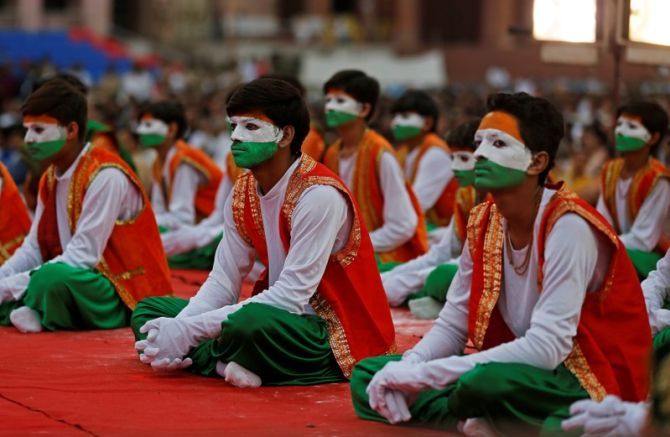A clear message was that the ongoing seven-decade-old model of agriculture, based on extensive reliance on subsidy by the government at every stage, was not going to work, said NITI Aayog vice-chairman Rajiv Kumar.

NITI Aayog vice-chairman Rajiv Kumar says the Gujarat election has sent out a message that youth is unsatisfied, as what is being achieved is probably not in sync with their aspirations.
“I am not saying they are unemployed or else they wouldn’t have come out in such large numbers on motorcycles to election rallies.
"But, clearly, they are not satisfied as their aspirations might have grown,” Kumar told Business Standard.
He said the government should anticipate future skill requirements, which existing strategies were not capable of doing, and greater focus should be placed on apprenticeship.
“There is a 1962 Act which mandates that companies keep a portion of their workforce as apprentices and the government gives subsidy of Rs 1,250 (per head) through two schemes.
"My suggestion is to raise this amount and give the assurance to the employer that this does not mean an extra inspector for them,” the NITI Aayog vice-chairman said.
He said poverty estimates were just theoretical exercise, without much practical relevance to policy-making.
A better idea would be to focus more sharply on human development indices, as it served the purpose of addressing the deprived sections of the population much more than merely estimating poverty.
He said the Gujarat electoral results were a vindication of the government’s commitment to reforms.
The fact that urban Gujarat voted in favour of the Bharatiya Janata Party meant that all those who were expected to be hurt by the twin reforms of demonetisation and the Goods and Services Tax haven’t been impacted much.
“The results also show that the business and trading community, rightly expected to be hurt by both demonetisation and GST, clearly don’t fear getting into a formal economy, at the same time, they would also like implementation issues to be addressed.”
The polls were also a message that traders and businessmen liked the fact that the governance was becoming transparent, accountable and less discriminatory.
At the same, the results also pointed towards a bigger issue in agriculture. A clear message was that the ongoing seven-decade-old model of agriculture, based on extensive reliance on subsidy by the government at every stage, was not going to work.
The government should focus on addressing the issue through a new approach, he said.
The NITI Aayog vice-chairman said a few things should be done first to revive agriculture.
Foremost was that the composition of agriculture output should to brought in sync with consumption of agriculture commodities, which was changing dramatically.
The mismatch would be solved when India moved to high-value agriculture.
“This is where you need a different approach than just raising MSPs as MSPs encourages production of particular commodities and, therefore, we need to move to a system of price-based farmer support to income-based farmers support, maybe through a social security net, to the farmers directly rather than the price support that distorts market and production.”
Also, farmers should be made a participant in the value chain rather than being reduced to a mere producer of primary commodities.
“We should replicate the Mother Diary model or the Maharashtra sugarcane model nationwide which make growers a participant,” Kumar added.
Photograph: Amit Dave/Reuters












 © 2025
© 2025